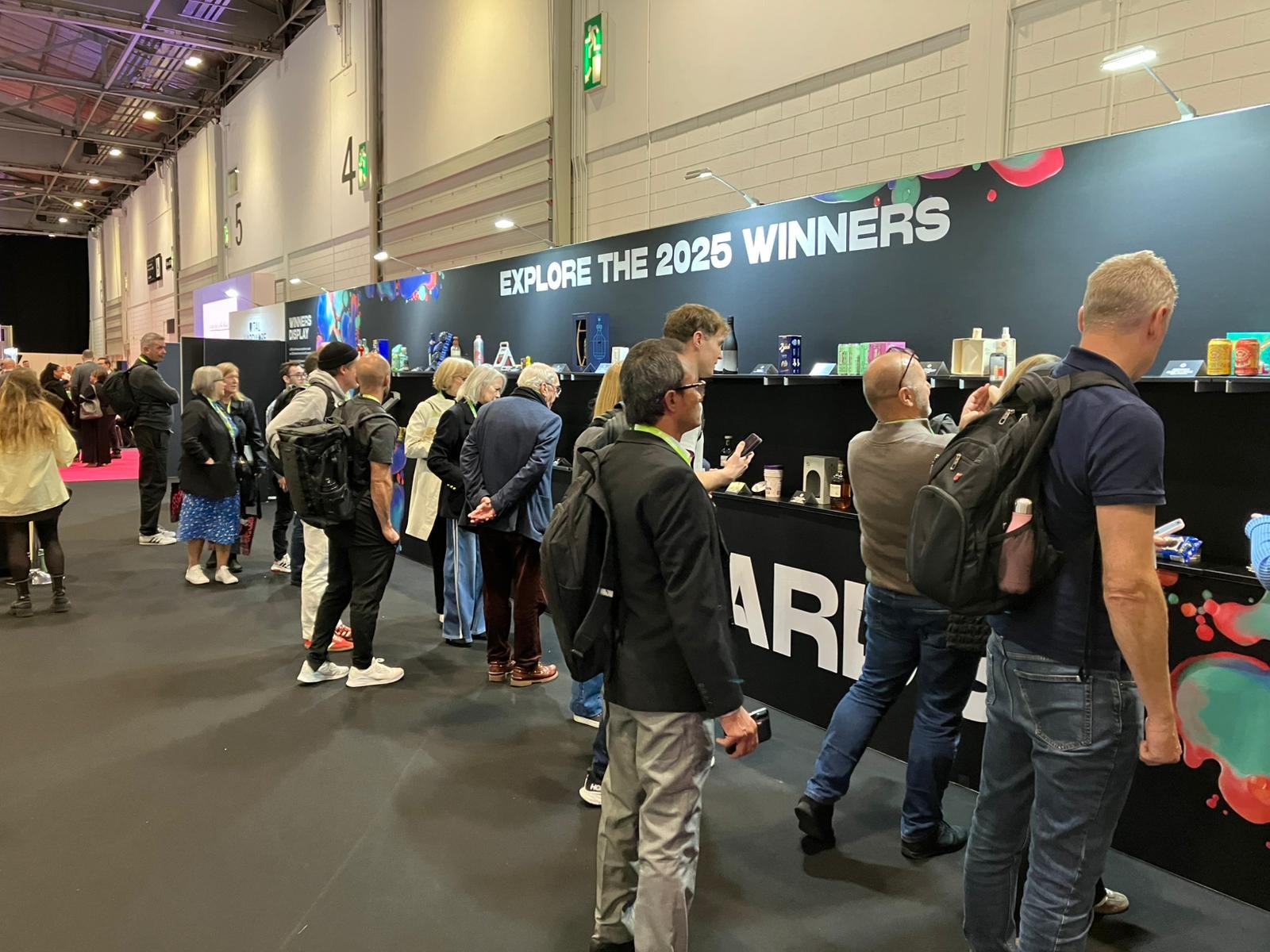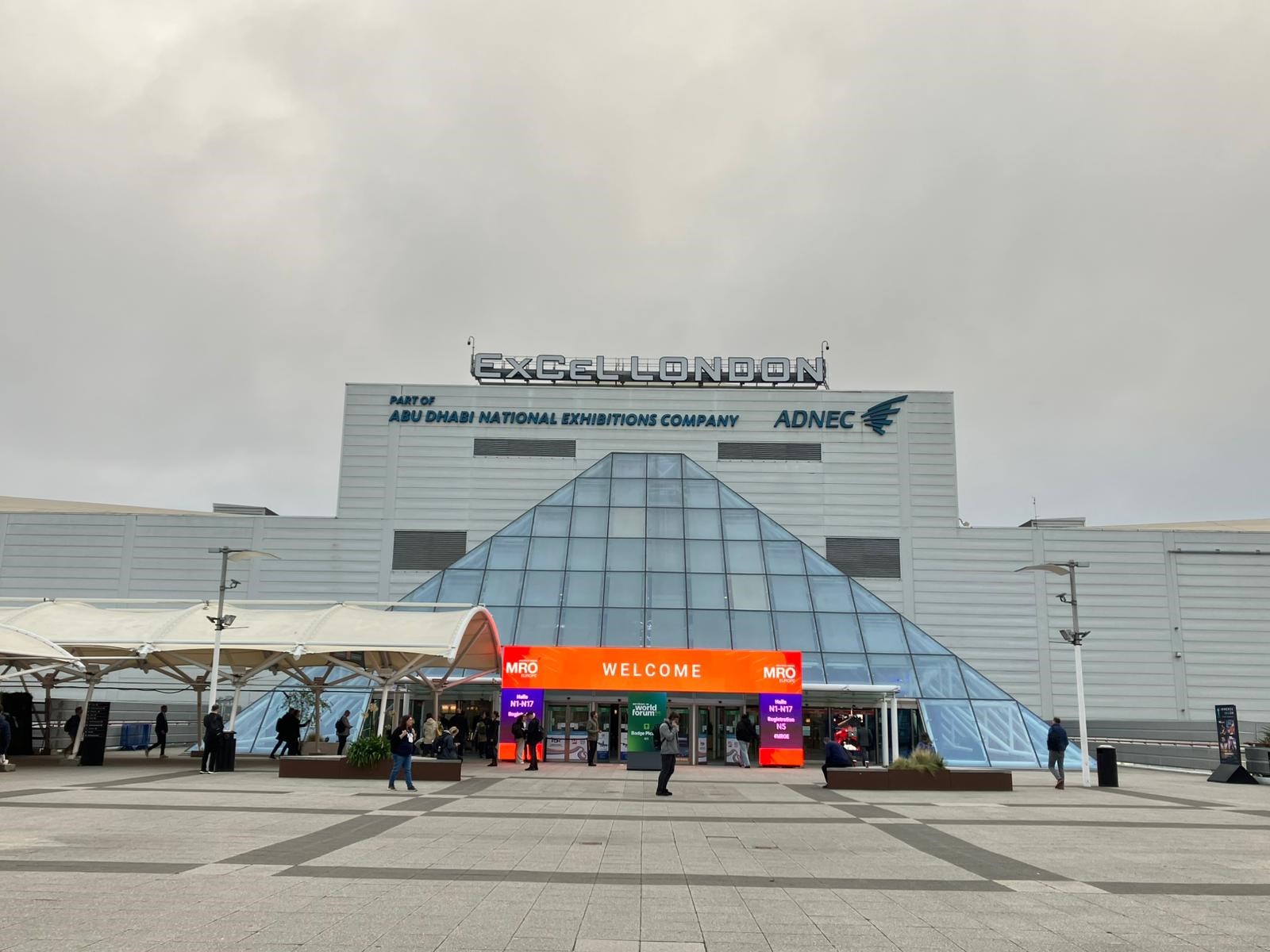Attributed to James Clarke, Senior Account Manager at Think B2B Marketing.
At London Packaging Week 2025, one thing was clear. Packaging has always been more than just protection or presentation, even if we sometimes forget it. It is a medium for empathy, creativity, and meaningful connection. From accessibility to sustainability, luxury to mass-market appeal, the conversation centred on design that reflects the world as it really is, a world where inclusivity, intentionality, and care are not optional but fundamental.
As brands and designers navigate increasingly complex challenges, the choices they make in materials, form, and sensory experience have real impact. Packaging has always served as both a functional object and a vessel for storytelling, ethics, and emotional engagement. Whether ensuring every interaction is accessible, creating tactile moments of delight, or being candid about the compromises behind sustainability, the industry is reminding itself of what good packaging has always been capable of.
This year’s discussions and showcases at London Packaging Week (LPW) highlighted three intertwined pillars shaping modern packaging. Inclusive design that considers everyone, craftsmanship and intentionality that elevate experiences, and transparency that builds trust. Together, these principles reveal a broader truth. The best packaging is human-centred, thoughtful, and resonant, designed not just to be seen, but to be felt, understood, and remembered.
Inclusive packaging as a given
One of the defining themes of this year’s London Packaging Week was Design for All, described as “championing inclusive, accessible and representative packaging, designing for a world that reflects everyone.” Kevin Marshall, Senior Creative Director at Microsoft, spoke about how inclusive design and accessibility are playing an ever-greater role in how we build packaging experiences, and how those experiences shape us as professionals and as people. “Designing with all people in mind is challenging, it’s deeply humbling, but it’s always incredibly rewarding,” he said. “Inclusive design doesn’t just open our products and experiences to more people, it reflects how people really are. And that’s meaningful.”
With the average consumer now making between 50 and 100 direct interactions with packaging every day, those touchpoints represent powerful opportunities to be inclusive, or unintentionally exclusive. Every decision we make as creators can raise or lower barriers to participation, whether that’s through grip, readability, intuitive opening or tactile feedback. Inclusive packaging should not exist as a specialist category; it should simply be considered good design.
Lucy Edwards, founder of inclusive beauty brand Etia, summed it up well: “For my brand, packaging is the thing we focus on the most. How can we make our packs aesthetic, but also universally designed for everybody?” At its core, designing for inclusivity is about empathy, meeting people where they are, as they are, and creating experiences that make everyone feel seen, capable and included.

Craft, creativity and intentionality
The luxury market was strongly represented at London Packaging Week 2025, and as Show Director Josh Brooks noted, “every year it feels a little bit more luxury.” Yet with ongoing economic pressures shaping both consumer expectations and brand behaviour, one question lingers: has this drive to “tone down” come at the expense of creativity?
In reality, constraints have become catalysts, pushing brands and designers to find new ways to deliver the elevated experiences that define luxury. For Davide Cerrato, CEO of Bremont Watches, authenticity sits at the heart of luxury branding. “For us, our British heritage and identity is super important,” he explained. “It’s important to stay true to who you are, enriching elements of your story with new elements that are future proof.”
The journey toward intentional and sustainable luxury packaging is rarely straightforward. Heritage brands and independent jewellers face unique challenges. Protective packaging must survive shipping, appeal aesthetically, and be desirable enough for clients to retain. By rethinking the packaging ecosystem, removing unnecessary layers, using recyclable FSC certified materials, and designing bespoke boxes, brands can make meaningful strides without compromising quality or sustainability. Joanna Miller, CEO of Garrards, explained, “We knew we wanted to do something different with our packaging and we wanted to make it more sustainable.” Innovation emerges from a willingness to break from convention, while intentionality ensures every choice, from materials to form, is made with purpose.
Intentionality also guides the sensory and emotional design of luxury packaging. Vincent Villéger, a designer specialising in luxury and beauty packaging, product, and retail design, explained, “When somebody interacts with their packaging, they feel a certain way because that’s the way, as designers, we decided we wanted them to feel.” The goal is not just to create something beautiful, but to craft experiences that evoke specific emotions, from surprise and wonder to reassurance, reflecting a deep understanding of brand and audience. Engineering and craft work in harmony, and the most successful packaging invites interaction. Through texture, precision, and quiet intelligence, even small details become moments of delight. Even the cleverest innovations are driven by the human desire to make things better, more intuitive, and more joyful.
Despite challenges including supply chain pressures and economic constraints, luxury packaging continues to evolve, blending creativity, sustainability, and human centred design. Consumers respond to thoughtfulness, appreciating both aesthetic and ethical considerations. As Villéger observes, “brands should seize the opportunity to give consumers things to be happy about.” By combining rigour, craft, and moments of delight, packaging transcends its function, to sail above societal headwinds.
Transparency, trust, and the return to the real
Honesty and openness were central to the conversation, reflecting a broader learning mindset within the luxury packaging space. Acknowledging that no one has all the solutions, the discussion emphasised the importance of candid reflection and cross-brand collaboration. As Yvonne put it, “None of us have a solution and we can’t pretend that we do. It’s important to be open, candid, and keep learning together.” Echoing this, Nick Vaus, Co-founder and Managing Partner at Free The Birds, summed it up succinctly: “Education has to start with packaging companies. Designers, when they’re making choices, can be all over the place. Everyone has to be really honest about things they’ve learned and things they’ve been caught out on.”
This openness represents a wider cultural shift. By sharing experiences across groups, the speakers highlighted the value of collective learning and the need to navigate sustainability challenges thoughtfully rather than rushing toward untested or impractical solutions. Transparency about compromises, explaining why a certain material or closure cannot yet be replaced for performance or recyclability reasons, was seen not as a weakness but as a way to strengthen trust with consumers.
The journey toward sustainable and high-quality luxury packaging is rarely straightforward. Even when positive steps are taken, such as removing magnets or choosing environmentally conscious laminates, unexpected issues arise, like packs breaking in transit. These experiences underscore the delicate balance between doing the right thing and maintaining the quality and beauty expected by customers. Luxury packaging, the conversation noted, should remain crafted and tactile, delivering delight through detail rather than relying solely on gimmicks or digital novelties. In an age of digital fatigue, consumers are rediscovering the joy of texture, weight, and finish, the qualities that make packaging not just seen but felt.
Craftsmanship and humanisation were highlighted as critical differentiators in a digital world. While some processes had become primarily functional, Fortnum & Mason rediscovered the value of storytelling, artisanal techniques, and tactile experiences. Celebrating the ‘involved craft’, whether through hand-stitching or thoughtful finishing, remains a hallmark of the brand, reinforcing customer expectations and preserving the prestige associated with premium packaging. As Yvonne reflected, “It just became a vehicle to transport goods in. But actually, this in itself, is a beautiful thing and it’s kept in everyone’s home.” In this context, engineering and design become emotional. When every choice reflects care, it keeps luxury’s lustre alive.
Collaboration with suppliers was described as multifaceted, going far beyond cost considerations. Strong partnerships are defined by creativity, mutual problem-solving, and shared celebration of successes. Shows like London Packaging Week are praised for facilitating these exchanges, allowing skills and insights from one sector to inform another. Planning and executing iconic offerings, such as the Fortnum hamper, requires meticulous attention year-round, from conception and supplier coordination to packing and testing, culminating in a product that delights both the giver and recipient. The process is painstaking, but the satisfaction derived from sharing a thoughtfully crafted, tangible gift illustrates why the new luxury is not virtual but real.
Second life and collectability: packaging worth keeping
One of the standout trends at London Packaging Week 2025 was the rise of second-life packaging. From tote bags, vanity cases, and refillable bottles to elaborate whisky boxes and whimsical watering cans designed to be transformed into vases, brands are creating packaging that people want to hold on to, reuse, or display. This is packaging that transcends its original purpose, becoming part of a consumer’s home, their rituals, and their memories.
The show floor offered a rare opportunity to fine-tune and reflect on product packaging, with every one of the more than 200 exhibitors providing lessons in craft, innovation, and consumer engagement. Thousands of packs were on display, each packed with insights about materials, functionality, sustainability, and emotional resonance. Together, they demonstrated that thoughtful design invites people to engage with a product beyond the moment of purchase.
This focus on longevity and collectability reflects a deeper understanding that packaging is an extension of a product’s identity, not just its protection. If it is worth keeping, it is worth remembering.
London Packaging Week 2025 reminded the industry that packaging is more than a container. It is a point of connection between a brand and a person. Inclusive design, craftsmanship, engineering, transparency, and emotional storytelling are not competing priorities. Together, they signal a return to intentional, human-centred design. When packaging feels human again, people do not just buy it. They interact with it, cherish it, and keep it. That enduring connection is what great packaging has always been about.
To find out more please visit: www.thinkb2bmarketing.com






